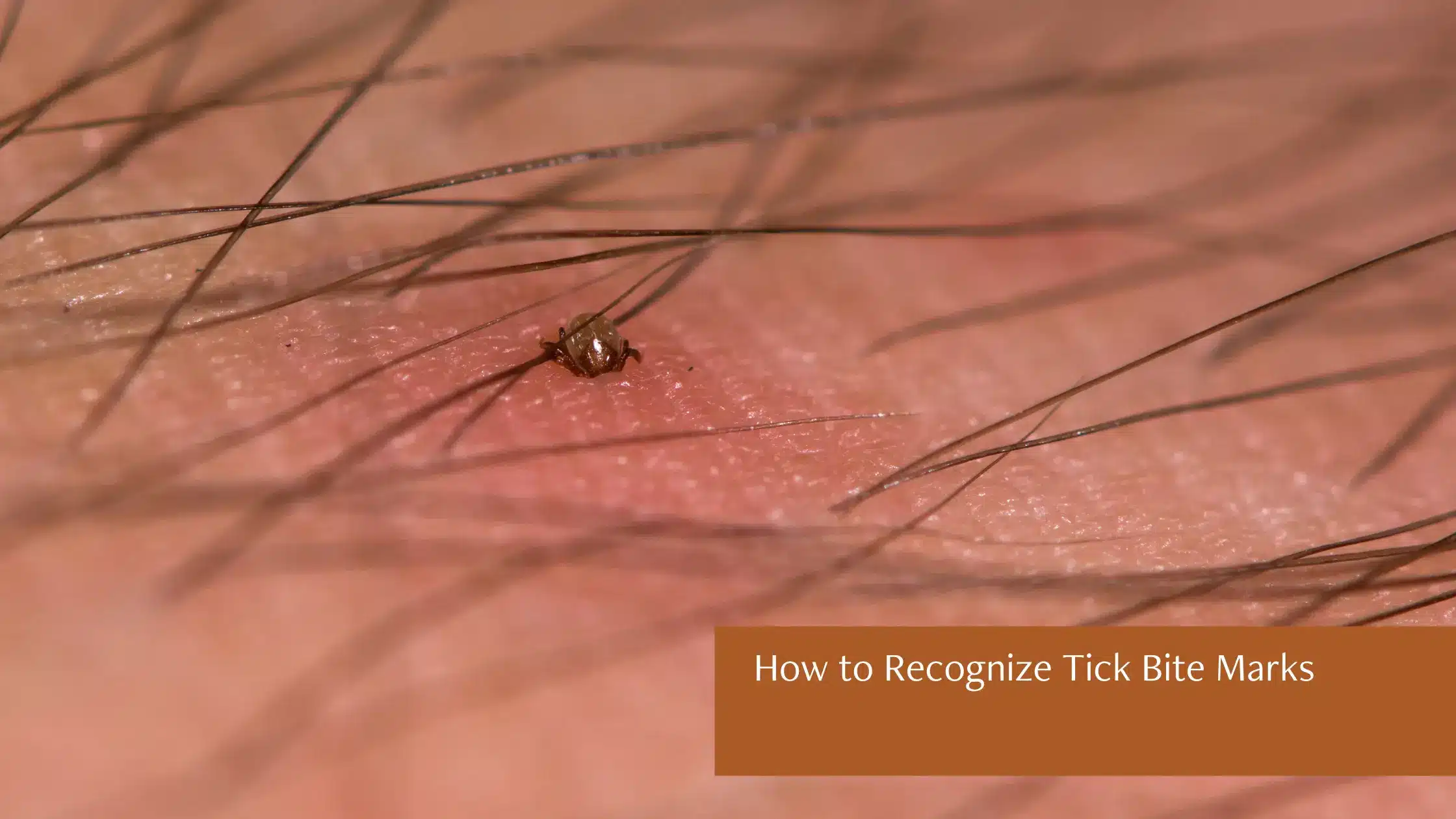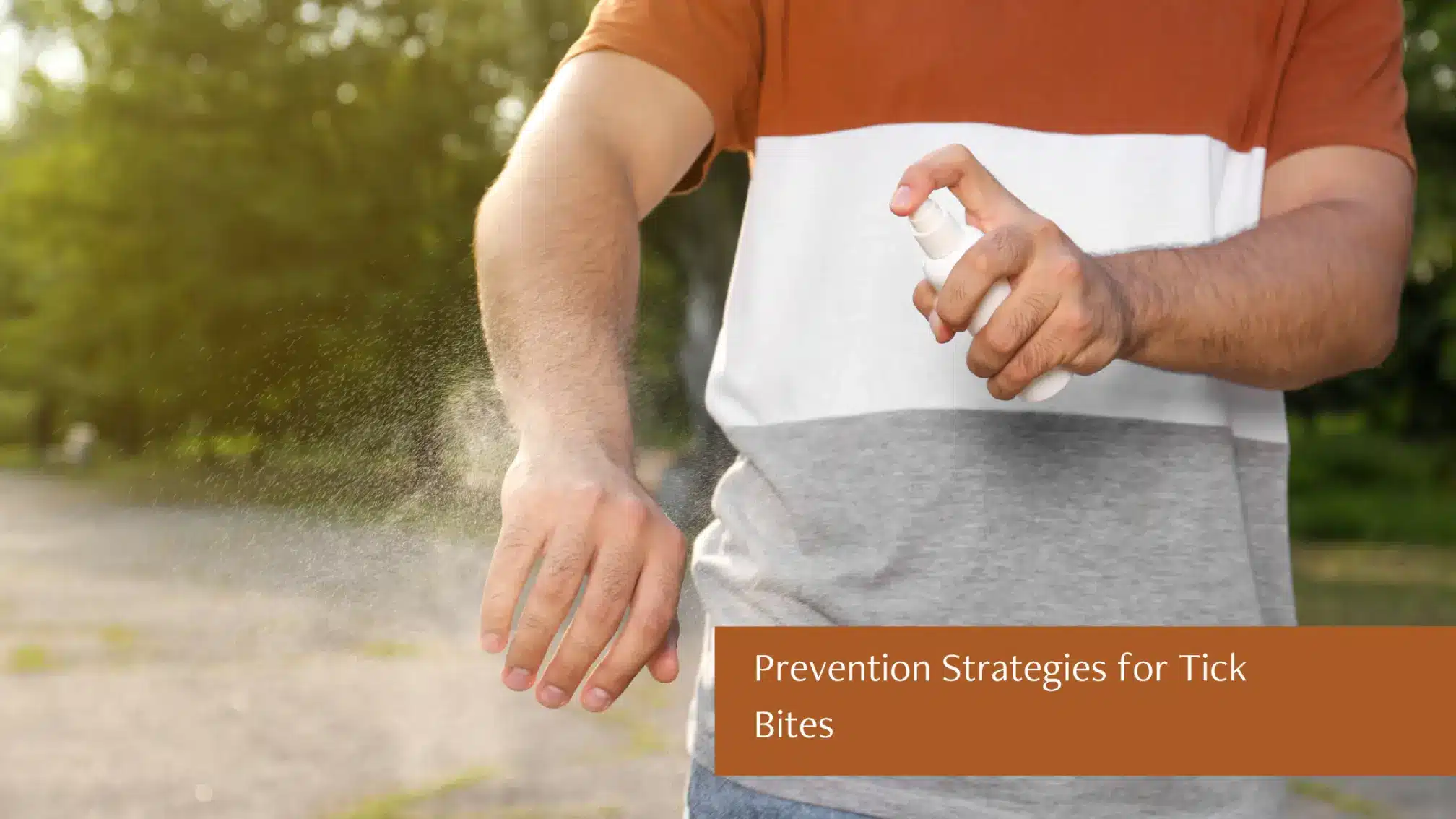Tick Bite Marks What to Watch For and How to Prevent Them
Tick bites are more than just minor annoyances; they can pose significant health risks if left unchecked. Whether you frequent wooded areas, have pets that roam outdoors, or simply enjoy gardening in your yard, understanding tick bite marks and how to prevent them is crucial.
This guide will cover how to identify tick bites, the risks they pose, and the best strategies to prevent them, so you can enjoy the outdoors with peace of mind.
How to Recognize Tick Bite Marks

Recognizing a tick bite is half the battle. Tick saliva contains anesthetic properties, which can make their bites painless and difficult to notice. Here’s what to look for:
Common Signs of Tick Bites
- Small red mark or spot at the bite site.
- Bull’s-eye rash (a red circular rash with a clear center); often associated with Lyme disease.
- Swelling or irritation around the bite.
- Itchiness or warmth to the touch at the location.
If you find a tick attached to your body or notice a suspicious mark, don’t panic. Properly removing the tick promptly reduces the risk of contracting any illnesses.
Why Are Tick Bites Dangerous?
Ticks can carry pathogens that lead to various diseases, making quick identification and management critical. Some tick-borne illnesses include:
- Lyme Disease
- Symptoms include fatigue, headaches, joint pain, and even neurological symptoms if left untreated.
- Rocky Mountain Spotted Fever
- Recognized by fever, rash, and muscle pain.
- Babesiosis
- A tick-borne parasitic infection that causes symptoms similar to malaria.
- Tularemia
- An uncommon infection that can escalate from a simple fever to complications if untreated.
The prolonged attachment of ticks increases the likelihood of disease transmission, so prevention is key.
Prevention Strategies for Tick Bites

The best way to deal with tick bite marks and their associated risks is to avoid getting bitten in the first place. Follow these prevention tips:
1. Dress to Deter Ticks
- Wear light-colored clothing to spot ticks more easily.
- Opt for long-sleeved shirts and pants tucked into socks to create a barrier.
- Consider treated clothing with permethrin, an effective insect repellent.
2. Use Tick Repellents
Apply EPA-approved repellents such as DEET, picaridin, or oil of lemon eucalyptus on exposed skin. Reapply as directed and keep repellents handy during prolonged outdoor activities.
3. Conduct Regular Tick Checks
- After spending time outdoors, check your body for ticks, especially warm, concealed areas like the underarms, behind the knees, and scalp.
- Don’t forget your pets! Check their fur and between their paw pads.
4. Maintain Your Yard
- Keep your lawn mowed and remove leaf debris regularly, as ticks thrive in dense vegetation.
- Install a physical barrier like gravel or wood chips between your lawn and wooded areas to deter tick migration.
5. Shower After Outdoor Exposure
Take a shower within two hours of being outdoors. This can help wash away unattached ticks and give you the opportunity for a thorough self-check.
If you find a tick attached, follow these steps for safe removal:
- Use fine-tipped tweezers to grasp the tick as close to your skin’s surface as possible.
- Pull upward steadily without twisting or jerking, as this could leave parts of the tick embedded.
- Clean the area thoroughly with soap, water, and antiseptic.
- Dispose of the tick by sealing it in a plastic bag or flushing it down the toilet.
Monitor the site for any new symptoms or changes in the tick bite mark. If you develop symptoms like fever or unusual rashes, seek medical attention immediately.
Protect Yourself with Expert Pest Control Services
Ticks are persistent pests that can thrive in your yard, putting your family and pets at risk. If you’re seeing ticks in your outdoor spaces, it’s time to take action. At Brooks Pest Solutions, we provide tailored tick control solutions to keep your property safe and tick-free.
- Expert treatments to eliminate existing ticks and prevent future infestations.
- Pet-friendly and eco-conscious solutions for your peace of mind.
- Ongoing maintenance plans for ultimate protection year-round.
Don’t wait for tick bite marks to become a problem; book a consultation today and secure your yard against ticks and other pests.
Schedule Your Pest Control Consultation Now!
Ticks may be small, but their impact on health and comfort can be significant. By staying vigilant about prevention and enlisting professional pest control services when needed, you can reduce tick-related risks and enjoy your outdoor spaces without worry.
